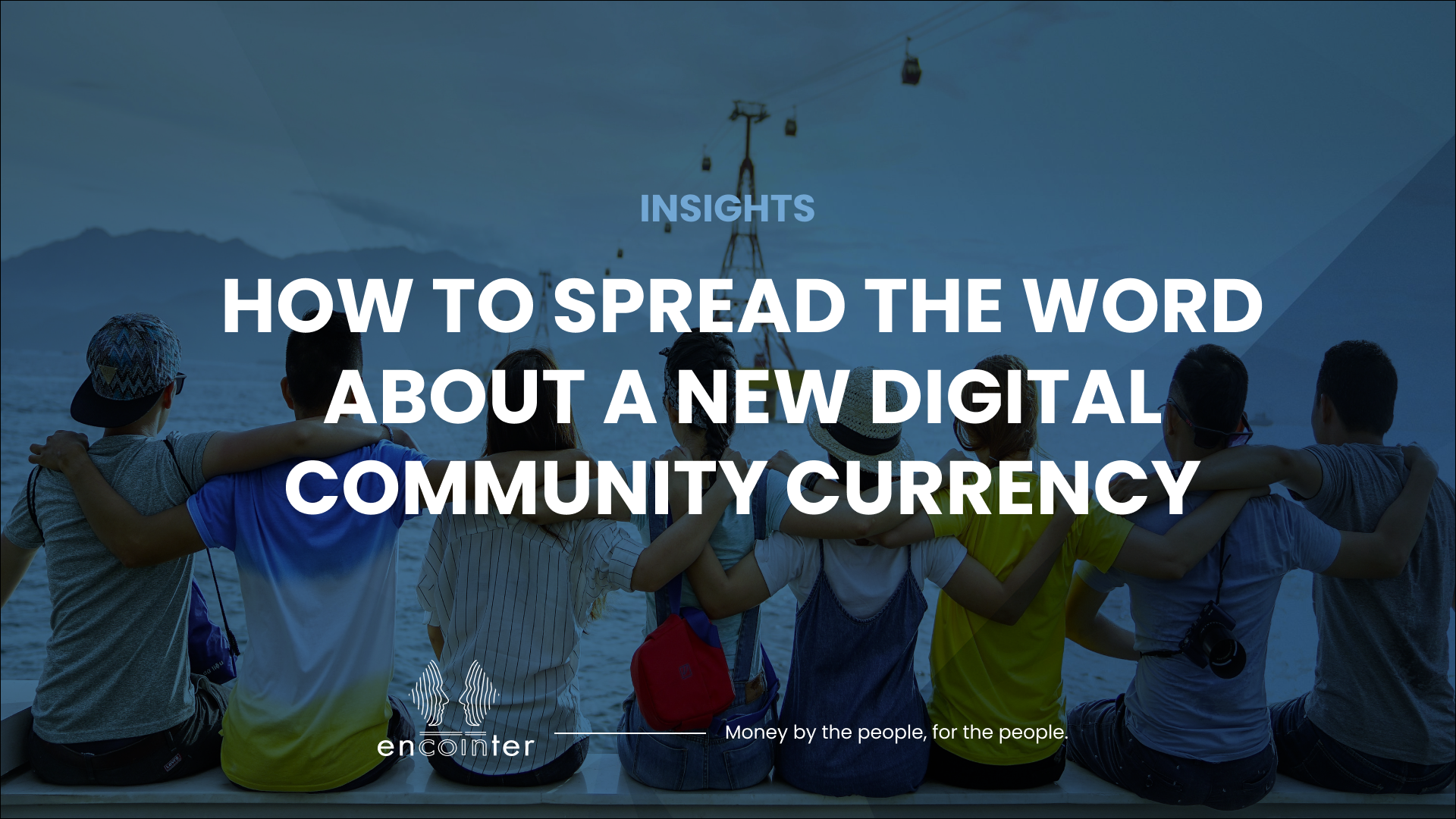Encointer offers a framework to set up a reliable and secure digital community currency. But for any local currency to gain traction and become successful, getting the word out to potential users and other stakeholders is vital. When you first launch a new community currency, it can be difficult to know where to start with communication. As your resources are likely to be quite limited, it is important to develop a simple and clear plan of action to guide your communications activities. This post discusses what to consider when getting started.
Finding a key message that can unite
When starting out, try to find a short, clear message that captures the appeal of your local community currency for everyone. This high-level message should not be overly focused on any one audience and should summarize the benefits for the community as a whole. It may help to think about the biggest challenges facing your community and how a local currency might help to alleviate them. Then capture this benefit in a short statement.
Remember, that it takes motivation to become involved in a voluntary project, so try to keep your key message short and direct and use active rather than passive vocabulary. For instance, rather than a passive statement like “community currencies can help to boost economic activity in marginalized areas”, consider using personal pronouns (like “you” and “your”). By using them, you can appeal directly to your audience and convey a sense of pride and ownership over the local currency. Following this logic, the above message could be rewritten as “help boost your local economy – join our rapidly growing community currency today”.
Planning your communications activities
When launching a local community currency, there are many possible target audiences to communicate to including potential users, local businesses, local leaders and influencers, local authorities, the media, academics, donors, and NGOs. However, with limited resources, it is important not to try to do too much at once.
A local currency is a bit like a social network — the more people who use it, the more useful it becomes. Thus, when first starting out, it is vital to attract early adopters, including potential currency users, community leaders, and local businesses who might agree to accept the currency. Later, when the currency gains users and has an established track record, you will have a stronger basis from which to reach out to a broader range of stakeholders. Thus, it may be worth considering a phased approach to communicating with stakeholders similar to the one outlined in the graphic above. In your communications plan, you can include benchmarks that need to be reached before broadening the scope of your communication to include additional audiences. For example, you may choose to begin approaching journalists in the local media once you have reached 200 active currency users. If you wait until the project has gained some traction before beginning media outreach, it will make it more likely that the project will receive media coverage.
The right message for the right audience
Once you have developed an overall key message and have a simple communications plan, it is time to start tailoring messages to specific audiences. Local currencies have different advantages for different groups of people in a community. With this in mind, consider creating targeted communications materials such as flyers, social posts, presentations, etc. that clearly outline the benefits for each group. Every community has its unique culture, demography, and challenges so there is no one correct solution here. However, the table below may help to provide inspiration for the types of messages likely to resonate with certain audiences.
Audience | Channels | Benefit | Sample Message |
Currency users | Facebook, email, in-person meetups | unconditional | Our digital community currency is open to everyone. All you need is a smartphone to claim your community income. |
|
| convenient / accessible | Easy and intuitive apps available for both Android and iOS. |
|
| community | Join our rapidly growing digital community currency. |
Local businesses and retailers | Facebook, LinkedIn, email, in-person meetups, local trade associations | new clients | Increase your sales and reach new clients by becoming a member of our new community currency initiative. |
|
| spent locally | Let’s keep value in our community. Start accepting our digital community currency today. |
|
| digital | Accept digital payments from your customers via smartphone, without any monthly costs or new equipment. |
Media | Press releases, personal outreach | voluntary/ autonomous | A group of local traders and community leaders have come together to tackle the city’s economic challenges with a new digital currency initiative. |
|
| technology/ innovation | An innovative new approach to growing the local economy that uses a decentralized payment network to greatly reduce transaction fees. |
|
| community leaders and influencers | The legendary sportsman and local celebrity John Abioye has become the latest ambassador to back the community currency initiative in the city. |
Donors | Pitch presentations, emails, letters, personal outreach, LinkedIn | boosts local economic activity | People often have goods and services to sell, but lack the income to trade. Digital community currencies help to get the local economy moving. |
|
| financial inclusion | A community currency is accessible to everyone who lives in the region, promoting financial inclusion. |
|
| mitigate inflation | A community currency can provide a reliable means of exchange for local transactions during periods of high inflation or other macroeconomic shocks. |
|
| reduce seasonal liquidity droughts | The community currency helps to shore up local demand in winter when there are fewer tourists in the region. |
Maintaining momentum
Once you have got your digital community currency up and running and have raised some awareness about it in the region, the next step is to build and maintain a network to continue progressing.
To foster a genuine sense of belonging and community, well-structured events can help. For example, Encointer’s community currency in Zurich, LEU, has initiated a series of regular meetups called LEUträff where volunteers, users, local businesses, sponsors, and local currency researchers can meet. Sharing experiences and discussing potential improvements.
Make sure to celebrate your successes with the community. You can help boost the morale of volunteers and participants by pointing out growing user numbers, the number of participants attending key signing gatherings, and the onboarding of new businesses who agree to accept the currency. Speak to users in-person and online as much as possible and use their experiences and comments as case studies and testimonials in your communications materials.
Launching a new currency community can feel like an enormous undertaking, but with careful planning, you can help get the most out of your communications activities. Although there are a wide range of stakeholders that you can potentially communicate with, in the beginning, early adopters are key. Every community is different, so there is no universal solution that can guarantee success, but by following some of the principles laid out in this blog you can develop a customized communications plan tailored to your region.


